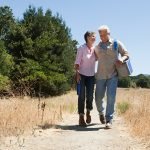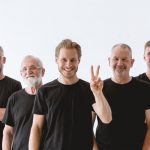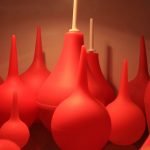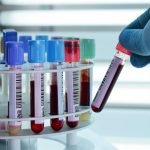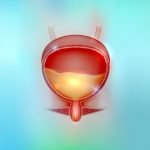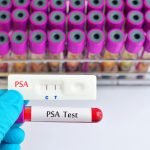Prostate Cancer—Guiding Perspectives
Mark Swanson, ND
Interview With Marcel Hernandez, ND
The naturopathic oncologist who triumphs over his or her own cancer most certainly gains a deeply personal and unique perspective when they treat the same cancer in their patients. My special guest Marcel Hernandez, ND, has walked this walk along the prostate cancer journey, won the battle, and made the transformation. He knows firsthand the rocky road of prostate cancer, from its initial diagnosis to achieving successful disease-free outcomes. His patient approach focuses largely on the art of prostate cancer navigation, which he further describes as data gathering, interpretation, and decision making to help guide the patient through his own cancer journey and transformation. He knows that making decisions is not only difficult but that the ramifications of making the wrong decision can also be dramatic. This is why the process of arriving at a decision is so important. He advocates decision making based primarily on objective and evidence-based criteria, which are individualized for each patient. The ideal final decision on treatment is one that is based on an appropriate mixture of data, intuition, and personalization.
About Dr Hernandez
What is your educational background and current position?
I received a doctor of naturopathy from Bastyr University, in Seattle, Washington, in 1991. Since then, I served as medical director for an insurance company for 3 years and currently own and comanage the oldest and largest integrative care clinic on the San Francisco Peninsula, California. My naturopathic physician wife and I also own and operate Pacific Naturopathic Retreat Center on the Big Island of Hawaii.
Patient Guidance Through Personal Experience
What led to your interest in prostate health and ultimately becoming a naturopathic specialist in prostate cancer?
There is nothing like your own experience to drive an interest in a particular subject. As a naturopathic physician, I have for many years treated men with prostate issues. When I started experiencing urinary symptoms typical of BPH [benign prostatic hyperplasia], I put myself on a protocol that had worked for many of my patients.
- When my PSA [prostate-specific antigen] rose from 0.9 to 4.9 [ng/mL] in the span of 10 years and my free PSA percentage plummeted to 5% in January of 2009, I knew what I had was more than a simple case of prostate enlargement. I began research to find the best urological specialists available to provide insights and evaluations. My wife and I visited several.
- In mid-2009, I underwent a biopsy and was diagnosed with prostate cancer, with a Gleason score of 8. Ultrasound also showed a bulging of one of the prostate lobes, which the urologist said was the tumor, about to break through the prostate encapsulation. I then began a full-time, highly focused study of what would be the best therapeutic approach to take in my specific case.
- In October 2009, I had a laparoscopic prostatectomy. Since then, I have counseled many men on all facets of prostate cancer.
- Simply put, the work I do now with men with prostate cancer is to help guide them through the morass of information, misinformation, and hype so that they can arrive at a therapeutic choice that is best for their specific case in both the short term and the long term.
Adjunctive Therapy
What is the role of an ND in prostate cancer management?
By law, naturopathic physicians are not permitted to be primary caregivers in working with the big C. We serve by helping our prostate cancer patients sort through the evaluations and confusing advice that they receive so they can choose the therapeutic path that best befits their unique situation. In addition, we use our knowledge of biochemistry to assist our patients in multiple ways, including immune system building, utilizing our array of anticancer nutrients, minimizing the effects of invasive procedures, and changing the conditions that gave rise to cancer in the first place. This is called adjunctive cancer therapy.
PSA Merit
The PSA test is still with us, despite its rapid deflation. What merit does it still have?
It has become fashionable to bash the PSA test—justifiably so, as PSA results have been wrongly used as a basis for invasive intervention. The most important thing to remember about prostate cancer is that, at present, there is only one definitive diagnostic procedure. That procedure is a biopsy. Other diagnostic methods are being investigated, but none has yet proven definitive. The role of the PSA is to serve as a general screen and as a guide to further evaluation. As with many lab values, sequential values are diagnostically far more valuable than isolated values.
Free PSA Percentage
What is your testing protocol for prostate cancer screening?
At present, the best tests an ND can use as a prostate cancer screen are the velocity of the rise in the PSA and the free to total PSA percentage rate. The free PSA percentage serves as a guide to whether or not a patient needs to undergo a biopsy for definitive diagnosis. If the free PSA percentage is under 10%, there is a 58% chance of cancer. In my case, my free PSA was 6%, so a biopsy was indicated.
Naturally, when ordering a free to total PSA, I also order a very comprehensive panel that my naturopathic partner and I designed to give us an in-depth insight into our patients’ biochemistry. I also check salivary hormones for estrogen levels.
Oncologist Referral
Based on your screening results, when do you consider it necessary to refer to an oncologist?
I always err on the side of caution. If the free PSA percentage drops to less than 15% (a 28% chance of prostate cancer) or the velocity of the PSA (speed at which it rises) is accelerated, I refer to a urologist for further evaluation.
After the Diagnosis
Navigating all the parameters surrounding a diagnosis of prostate cancer and its treatment options can be daunting to the patient. What is your approach to this?
I tell every cancer patient I work with that a wise person has many counselors, and I help them assemble a healthcare team. I also help them sort through the material they receive from various sources and explain perspectives. I write more on this below.
Active Vigilance
Patients with prostate cancer are often assigned a “watchful waiting period” as initial oncology management. What is your naturopathic perspective on this?
I do not appreciate the term watchful waiting. In my practice, I call this active vigilance. It is well known that the most common form of prostate cancer may be well contained within the prostate capsule and there is not a need for invasive intervention. With my patients, active vigilance means being on an anticancer protocol that supports their immune systems and changes the environment of the body such that cancer cells will not thrive.
Case Outline
Can you share with us a case report, management, and treatment outline from one of your patients with prostate cancer whose outcomes were improved with naturopathic intervention?
June 2010: Don K., a 67-year-old white male, presented with frequent urination and a feeling of incomplete voiding. He was getting up almost every hour during the night to urinate. He also complained of persistent fatigue and decreased libido. He did not remember when he did his last blood work but did remember that his MD said “everything was fine.” He does not remember whether or not he had ever had a PSA test.
Don’s vitals were unremarkable. We decided to run a CBC [complete blood cell count], comprehensive chemistry, free to total PSA, sedimentation rate, 25-hydroxyvitamin-D, free testosterone, free T3 [triiodothyronine], free T4 [thyroxine], TSH [thyrotropin], and UA [urinalysis]. We also ordered an expanded male hormone profile.1
His results showed a slight B12/folate anemia, 16 [ng/mL] for his vitamin D (we like it between 60 and 70), a total PSA of 4.9 [ng/mL], and a free PSA percentage of 4 (a ≥58% chance of cancer). Furthermore, his salivary hormone results showed that he was aromatizing testosterone to high levels of estradiol. Normal for estradiol is 0 to 5 pg/mL; Don’s value was 23 pg/mL. Without any hesitation, I referred Don to a urologist for a biopsy.
The result of Don’s biopsy showed a prostate-contained adenocarcinoma with a Gleason score of 6 (3 + 3). I told Don to begin research on his own as to how to treat the cancer and guided him on how to explore his options, including types of surgery, types of radiation therapy, hormone therapy, and alternative non-FDA [non–Food and Drug Administration approved] approaches, like high-intensity focused ultrasound (HIFU) therapy.
When Don returned for a consult after doing his homework, he was confused and upset. The MDs he went to for guidance were each pushing their own approaches: the laparoscopic surgeon, the incision surgeon, the various radiation docs, the non-FDA–approved docs—each therapist told Don that he was the poster boy for their particular approach and assured him of a positive outcome, given his small, contained tumor. Don and I then discussed the advantages of active vigilance, which is the path he is currently following.
June 2012: Don’s most recent blood and saliva tests showed a PSA of 2.9 [ng/mL] and a free PSA percentage of 9. His anemia is resolved, and his 25-hydroxyvitamin-D is 59 [ng/mL]. His salivary estradiol is now a normal 4 pg/mL. We are discussing whether or not he should undergo another biopsy to confirm our thoughts that the tumor, though not gone, is under control. He is resistant to a procedure. Although my naturopathic approach is conservative, evidence driven, and results oriented, Don is low risk at this point, and I agree with his decision.
There are a host of both exotic and standard adjunctive therapeutic approaches. Don’s protocol goals were specific to him.
- Goal 1: Stop aromatization of testosterone to estradiol with myomin,2 a natural aromatase inhibitor.
- Goal 2: Lower total PSA, raise free PSA percentage, and slow growth of tumor with vitamin D supplementation. Slow growth of prostate cancer with resveratrol, modified citrus pectin, pomegranate juice, lycopene, silymarin, and melatonin. Other nutrients as indicated.
- Goal 3: Ensure that Don’s lifestyle is immune system friendly. We adhere to naturopathic medicine’s sacred triangle of diet, exercise, and mental/emotional harmony. Current status: Don is better than stable at this point.
Improving “Cancer Kill”
What specific oncology cotherapy treatments do you use for improving cancer kill and protection of healthy cells?
- Radiation: When a patient undergoes radiation therapy, my first thoughts are protection of the tissues. I encourage patients to hydrate themselves well before and after therapy. I recommend glutamine for protection of internal tissues and fresh aloe vera gel topically post treatment. With regards to enhancing the efficacy of radiation therapy, particularly in the case of estrogen-dependent cancers, my suggestion is high-dose oral melatonin. Topical melatonin cream applied to the skin before radiation can also reduce the risk of skin side effects. I am quite excited about embelin, derived from a tropical climbing shrub named Embelia, for enhancing the effects of radiation in prostate cancer. Studies on embelin are ongoing.3 I also recommend that oxygen be administered during radiation, as it may increase the kill effect of therapy in areas of hypoxia-based radioresistance.
- Surgery: As concerns improving outcomes for patients who opt for surgery, promoting rapid healing, decreasing inflammation, and addressing stress are keys to successful results. A good B-complex (started well before surgery and continued during the recovery period), bromelain between meals after surgery, and relaxin4 as needed for postsurgical stress are part of a successful protocol I have used for years. The absolute key to a successful outcome is high-potency homeopathic Arnica, one dose as close to surgery as possible and another dose as soon as possible after surgery, is as close to medical magic as we can get. Surgeons invariably tell our patients on this protocol that their postsurgical healing is more rapid than anyone they have ever worked with. Finally, all IVs [intravenous administrations] pre and post surgery should be yellow. They should all have B-complex added to them to address the extreme stress that mind and body will be subjected to.
Thank you, Dr Hernandez. Please add any final comments.
And thank you, Dr Swanson, for presenting this excellent forum for exchange of ideas within our community. I am grateful.
Dr Swanson’s closing comment: That was an enlightening interview! Possibly the clinical pearl gem to be gained here is the navigational perspective the patient gains when his personalized care is carefully guided through a review of the evidence-based procedures and therapy options, with this decision-making process taking precedence over a less engaging pursuance of a higher urgency for initiating the swiftness of treatment. …I’ll add some curcumin to that too.
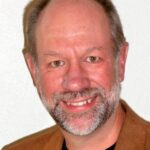 Mark Swanson, ND, writes “The Expert Report” column, which is featured in NDNR. Dr. Swanson has over 25 years experience as chief medical advisor, research and technical consultant, and products formulations expert to leading practitioner brand supplement manufacturers. He is a former associate editor for the American Journal of Naturopathic Medicine, national product director, and published researcher. He is a pioneer graduate of Bastyr University, 1984. Dr. Swanson has his private practice specializing in Preventics Care and Functional Medicine, in Sequim, Washington. Contact: [email protected]
Mark Swanson, ND, writes “The Expert Report” column, which is featured in NDNR. Dr. Swanson has over 25 years experience as chief medical advisor, research and technical consultant, and products formulations expert to leading practitioner brand supplement manufacturers. He is a former associate editor for the American Journal of Naturopathic Medicine, national product director, and published researcher. He is a pioneer graduate of Bastyr University, 1984. Dr. Swanson has his private practice specializing in Preventics Care and Functional Medicine, in Sequim, Washington. Contact: [email protected]
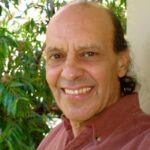 Marcel Hernandez, ND, graduated from Bastyr University in 1991. He specializes in men’s health and inflammatory bowel disease. After surgery for prostate cancer in 2009, he began collecting material for a new book, Prostate Cancer: The Definitive Guide for Making the Best Decisions, which is targeted for November 2010 publication. Dr Marcel and his naturopathic partner, Connie, spend their time between their Palo Alto, California, clinic and their Pacific Naturopathic Retreat Center in Honokaa, Hawaii.
Marcel Hernandez, ND, graduated from Bastyr University in 1991. He specializes in men’s health and inflammatory bowel disease. After surgery for prostate cancer in 2009, he began collecting material for a new book, Prostate Cancer: The Definitive Guide for Making the Best Decisions, which is targeted for November 2010 publication. Dr Marcel and his naturopathic partner, Connie, spend their time between their Palo Alto, California, clinic and their Pacific Naturopathic Retreat Center in Honokaa, Hawaii.
References
- DiagnosTechs. Male Hormone Panel (MHP) and Expanded Male Hormone Panel (eMHP). http://www.diagnostechs.com/Pages/MaleHormonePanels.aspx. Accessed September 7, 2012.
- Chi’s Enterprise, Inc. Myomin. http://www.chi-health.com/Products/MYOMIN.html. Accessed September 7, 2012.
- Dai Y, Desano J, Qu Y, et al. Natural IAP inhibitor embelin enhances therapeutic efficacy of ionizing radiation in prostate cancer. Am J Cancer Res. 2011;1(2):128-143.
- Chi’s Enterprise, Inc. Relaxin. http://www.chi-health.com/Products/RELAXIN.html. Accessed September 7, 2012.





